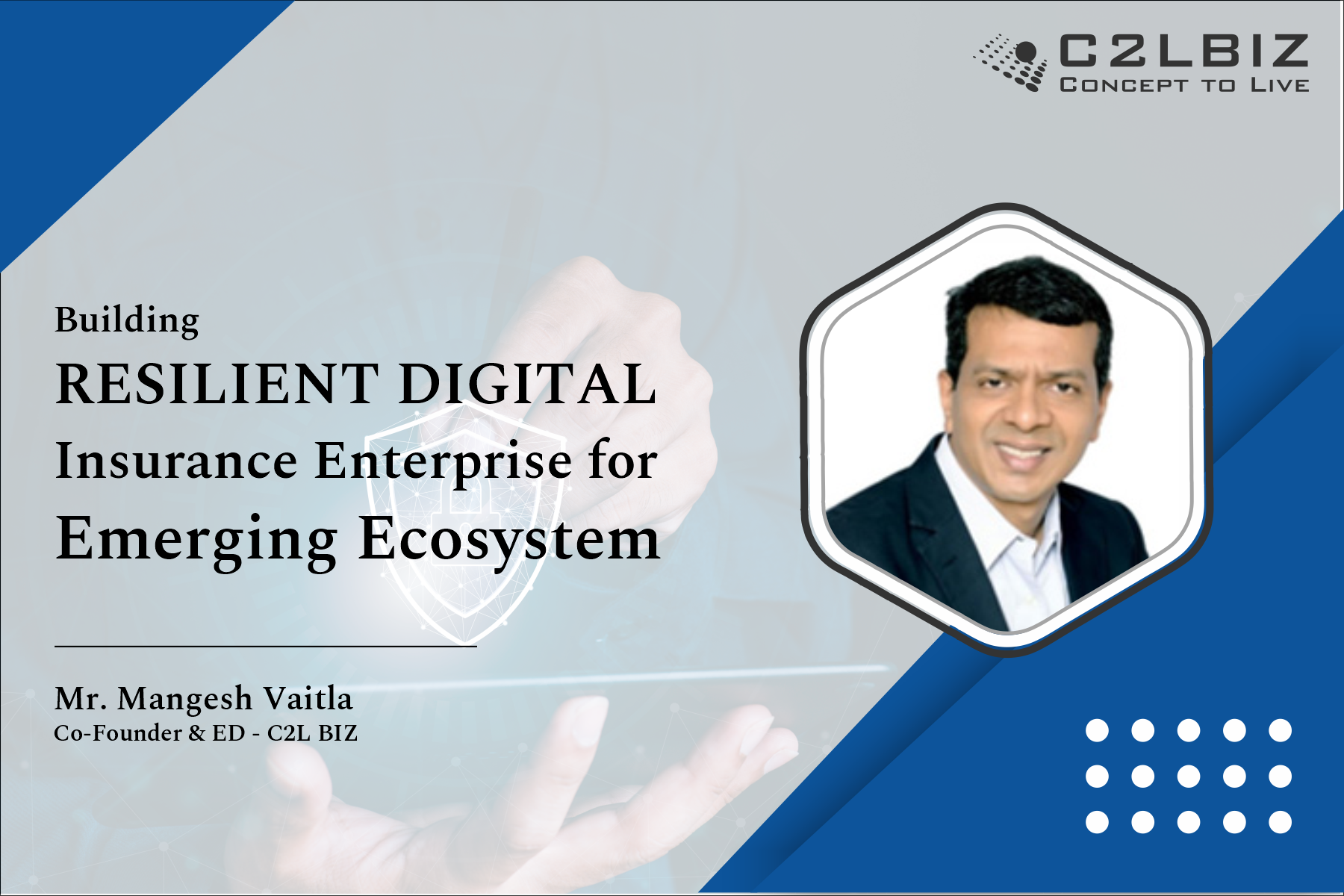As we speak about riding the next wave of growth, we see clear trends that will drive digitalization for the insurance industry in the times to come. Let us look at the matrix of digital transformation of the insurance industry mapped against the evolution of the market, especially with reference to the distribution ecosystem.
We see that the insurance distribution environment is shifting from insurers being an end-to-end suppliers via sales partnerships with agents, brokers, IFAs and others to having an ecosystem of independent partners with a split value chain. In alignment with this market shift, even technological advancements with digitalization solutions have moved up from offering digital point solutions to building enterprise digital platforms to enterprise solutions for a digital ecosystem.
Insurers of tomorrow, therefore, must prioritize building a resilient digital architecture that can help them navigate through dynamic market conditions, changing needs of the customer, and build a strong backbone for thriving in the distribution ecosystem.
We recommend a robust, agile and resilient digital ecosystem based on four key pillars:
- Granular micro-services with an enterprise-wide architecture fitment: The insurer should be able to shift out of monolithic systems and use more granular micro-services like product configuration, underwriting engine and workbench, claims, distribution hierarchy and performance among others, which are flexible and available across its enterprise needs. For example, there need not be separate configurators for different front-end digital systems or even for underwriting decisions across a field or back-end underwriters’ workbench, else it will lead to increased time to market for insurers.
- Communication across ecosystem partners using APIs, SDKs: Since insurers will now be in collaboration with multiple ecosystem partners, the digital applications should be able to seamlessly communicate across partner ecosystems with minimal recurring changes. For example, if the system is talking to agents or a bank partner, or brokers or aggregators, the communication with all partners should be unified based on enterprise-wide APIs, SDKs that do not need code modifications.
- Unified and consistent data view across the enterprise: Even if the services and systems are in silos, the insurer must have an enterprise-wide, unified data view for all customer data. This is important not just for consistent user experience for customers and partners but also for all analytical insights & AI-based initiatives in the company.
- Agility and scalability of IT infrastructure: To optimize the infrastructural cost, cloud-native architecture is critical. The elasticity of systems is very important to adapt IT infrastructure for the business peaks and troughs of sales cycles so that the workload can be managed efficiently.
Suboptimal solutions missing out on any of the four pillars above will inhibit insurers. It is essential for an insurer to ensure consistent adherence to these decision-making criteria for creating a resilient digital organization.





